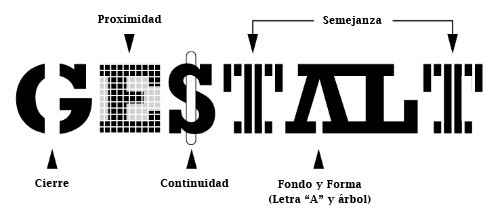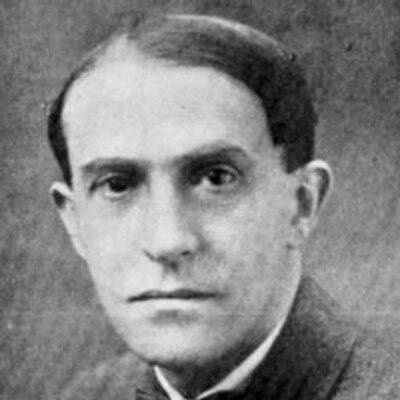While thinking about any objects or analyzing any thought processes, human beings generally do not just focus on every single element, but they consider things as an entity of a greater whole. We tend to perceive objects by analyzing patterns, grouping similar items, and clarifying complex structures. Gestalt theory talks about such human perceptions.
How you see, and process reality can be more simplified and empowering for you. From enhancing your problem-solving skills to analyzing things with better perceptions and holistic approach, Gestalt principles are applicable in multiple reams of human lives.
In this post, we will dive deep into the world of Gestalt Theory and try to understand its study about human sensation and perception. We will also understand how this theory plays a prominent role in cognitive psychology. So, let us get started with the introduction-
Table of Contents
Introduction
The human brain is configured in such a way that it observes patterns, logic, and structure.
It helps us perceive the world and make sense of it.
Thus, in the 1920s, a group of German scientists took a look at human behavior and mind as a whole. They then came up with a set of laws that essentially describe how humans recognize patterns, similar group elements, and simplify complex images.
Gestalt psychology is a school of thought that properly looks at the mind of humans and the behavior that they have as a whole. This particular psychology tells us that we do not merely focus on the smaller components but have a look at the bigger picture that matters. That is one of the most important reasons why it is considered to be a critical and essential theory.
Instead of just focusing on the smaller components, our minds should perceive all the objects as a proper part of something bigger than what the elements make it. These components can work as the elements to some of the more complex and complicated systems for sure. The perception, along with the human sensation, has been improved a lot due to the modern developments that have been happening so far.
Let us understand what the Gestalt principles are, who were its leading authors and contributors as well as its applications. We will be talking about how it can help the people in the best way and how it has made sudden strides in the world of psychology.
All About Theory
Also known as Gestalt principles and Gestalt psychology,
Gestalt theory is a trend in psychology history. Gestalt is a German term for “unified whole”. The word can be interpreted as “figure”, “structure”, “totality”, as well as “configuration” or “organized unity”.
The theory came to existence in the 20th century by the Austrian Philosopher Christian von Ehrenfels who was the person responsible for naming the entire movement.
The fundamental meaning of the Gestalt principles is that humans tend to order their experiences in a manner that is organized, regular, and understandable or recognizable.
The most accurate definition that we can provide about the outlandish theory is that “The whole is more than the sum of its parts”.
The main people who were considered to be the authors of the Gestalt alternatives which were executed correctly in the dominant psychological paradigms have been making a lot of contribution to the world for sure. That is one of the most important reasons why people need to know more and more about this theory as a whole.
Role of Theory in Visual Perception
The theory helps the designers in the following three ways:
- In terms of user experience, they help in determining which of the design elements will be the most effective in a given situation. This has lead to better insights into the knowledge of the users and how people can make sure that they are satisfied and happy in every possible way.
- These principles hold power through which visual perception can be influenced. It essentially allows designers to direct the viewer’s attention to particular focus points. It also helps them encourage specific actions as well as bring about behavioral change.
- The Gestalt theory, at its maximum utilization, helps designers build products that help solve their customer’s problems or meet their preferences and needs most intuitively and pleasingly possible.
A brief history
Gestalt theory, or Gestalt psychology, originated from the works of Max Wertheimer.
This theory was formed as a response to Wilhelm Wundt’s structuralism. Wundt was primarily focused on understanding psychological matters at a granular level. However, the other German psychologists were focused on looking at the human mind and behavior in its totality.
Several thinkers were responsible for the development which happened in this particular area in the best way. The psychological area was more influenced by the work of people that included Ernst Mach, Johann Wolfgang von Goethe, and Immanuel Kant.
The leading development that took place in Gestalt psychology was the one that was primarily influenced by the partial observations that were made by Wertheimer in a train station one day.
After purchasing a proper toy stroboscope that would display some picture and that too in a rapid sequence to present the particular moment in fragments, he became clear of the idea as a whole.
The thinker then proposed a particular concept known as the Phi phenomenon where the flashing lights would lead to a specific event known as the apparent motion. To put it in simpler words, we tend to perceive the movement where there is not any movement at all.
When it comes to providing the perfect example of the apparent motion, movies can be considered as one of the best-suited options for sure.
By using a specific sequence that is filled with still frames, the illusion of scenes and things moving can be created in the best way without any trouble or hassle.
The guiding principle of the theory was popularly stated as “The whole is other than the sum of the parts”. The entire behavior cannot be determined by the individual elements that make it for sure.
The intrinsic nature of a whole object helps in determining the part-processes in the best way. The main focus of having the theory was to look into the nature that these whole objects and sequences had.
Key Thinkers of Theory
Several German psychologists influenced the theory. The three founding psychologists of the theory are:
1) Kurt Koffka
He had a lot of varied interests and studied numerous topics in psychology, such as hearing impairments, learning, as well as perception.
2) Max Wertheimer
Wertheimer is also known for his concept of the phi phenomenon. This phenomenon entails the perception of several still images moving at a fast pace. It, in turn, creates an illusion of movement. He made some of the most valuable insights into the peculiar phenomenon for sure.
3) Wolfgang Kohle
Another critical founding member of Gestalt psychology, Wolfgang Kohler is also noted for his research on problem-solving as well as his disapproval of the way structural lists use introspection to study the human mind. He is also known for his opposition towards behaviorism.
Critical Features
Here we are going to talk about some of the main characteristics.
There is no doubt that these characteristics are the defining elements of the entire theory and hence it is essential for the people to ensure that they know about it so that they can have an idea about the concept.
You need to ensure that you are listening to every single word that we have to say because it is going to help you out in the best way.
1) The Primary Forerunning Were Philosophers
This is one of the most important characteristics that people need to know about the Theory for sure. Many thinkers were responsible for the creation of this fantastic theory which delved deeper into human behavior and perception.
The notable names who were responsible for the theory are Kant, Husserl, and Descartes who were involved in developing a particular approach that would form the basis of this assumption. The current psychologists can make specific ideas and then obtain results based on the theory that they made in the past.
2) People Must Be Treated As a Whole
This is another one of the most important things that people need to keep in mind about one another in the best way. We shall not explore the different dimensions which are responsible for shaping us and that too in isolation.
A properly executed holistic approach is essential at this point when we are talking about the rational behavior and health of the people. We will not be able to reduce the complexity which forms the human mind.
The theory is meant for exploring individual dynamic relationships that are meant to connect most of the different elements that take place in the reality of the world. One of the best examples of the separating process would be learning from one’s memory.
3) Everyone Is Active When It Comes To Understanding Reality
Most people out there do not perceive reality as it should be. Just like that, every single person has a vision of their own. So the people out there structure the information that they have and receive according to the experience that they have had in the past.
There are often many cases where the mental representations that we make up in our heads don’t necessarily correspond to the different elements that exist in reality. So, that is something that we have already created on out on.
Not to mention that we are ultimately able to have several adaptations of the different contents and mental processes along with the arousal of new and exciting situations.
This is telling us that we all have an active role to play on our own when it comes to understanding reality. So, there is not a single speck of doubt that every only person’s perspective on reality would be different.
4) It Opposed Predominant Approaches
The psychologists who were responsible for the creation of the Theory didn’t have an agreement with the people who conformed to the different approaches that were predominant at that time. Behaviourism was one of the methods that the psychologists didn’t agree with.
According to these thinkers, behaviorism was something that would limit the behavior of humans and make them specific associations between the natural stigmas and the responses that people had to them.
So, that is a perspective that left mental processes and other components entirely aside. Human intelligence and the potential were not discovered adequately due to these approaches. Apart from that, the thinkers didn’t use the forms of psychoanalysis as well which meant seeing people without willpower and visualizing them as passive agents.
5) The Primary Study Area Is Perception
The thinkers who were responsible for the Theory were putting their primary focus on seeking and finding out specific natural and straightforward explanations that would fit properly when it comes to adapting to the thinking that people had naturally.
How people perceived the reality was the basis of the theory.
With perception by our side, we can get more knowledge of the entire world and have specific interactions with it. Not to mention that perception also helps in making sure that there is a connection between the people in the best way.
The senses and the mental processes that we have are in constant interactions with each other, and it is something that allows us to provide performance for specific tasks that we have in our day to day life — for example, removing your hand from a particular surface that is burning or noticing one specific person’s frowning and deducing that they are upset.
Gestalt Laws or Principles
There are several principles in the theory. Let us look at some of the widely recognized principles.
1) Closure Principles
This principle states that when we look at an image that has missing parts, our brain is automatically wired to fill in the gaps such that we can perceive a whole picture. This entire image is, thus, a recognizable pattern.
2) Common Fate Principles:
This principle states that humans tend to understand the objects or elements that move in the same direction as more related to each other. It is in comparison with those who are stationary or are moving in different directions. It means that the human mind groups those elements which are moving in the same direction.
3) Common Region
This Gestalt principle states that the human mind groups those elements which are in the same closed region. Thus, this principle focused on the proximity of the ingredients.
4) Continuation
This continuity principle states that as elements are arranged in such a manner that they follow a curve or a line, they are perceived as more related to each other than those which are not in a curve or a string. Thus, the human mind flows with or follows lines or patterns.
5) Convexity Principles
This principle states that the human brain perceives convex shapes before concave shapes.
6) Figure-ground Principles
It is one of the most widely accepted and popular beliefs of the theory. It states that the human mind instinctively perceives elements as either being in the foreground or the background. Either the details stand out prominently, i.e. in front of the figure, or are in the back of the figure.
7) Similarity
This principle states that when elements seem to look similar to each other, the human mind groups them. It also makes us believe that they may have the same functions.
Applications
1) Basic Research
The theory has influenced numerous basic psychological processes. Two of these include the study of perception as well as attention. Many researchers and authors apply the principles to practice.
For instance, development in the field of perception has helped us to develop programs that help us avoid and prevent accidents and put up road signs.
2) Education
Students should learn to look and understand things and then, solve their challenges on their own. They should not just record or memorize the data that is already available. Practically, all of the theories can be incorporated into the current system of education. From the mental processes to the insights to the notions of therapy, students will be able to understand and thus, progress both personally and academically.
3) Problem Solving
While solving a problem, it can be quite useful in finding prudent outcomes. It tells you that different issues are the conglomeration of various components.
So, when you are going to solve that problem, you need to opt for productive thinking by going through reorganizations of different components so that you can reach the real insight.
Gestalt Theory Wrap Up!
Gestalt theory has had a significant influence. Its fundamental idea that the whole is different than its parts has played a substantial role in understanding the human mind and its functioning. It has also helped researchers understand human behavior.
The theory’s central ideas have had an enormous impact on the field of psychology. The Gestalt theory is universal in terms of human experience. It is widely being incorporated to improve user experience and design. It is being used to fine-tune the models to have a significant impact on the viewers. The theory insists on the use of productive thinking and forming insights.
It empowers you to analyze things and most importantly human minds from its spiritual realms. Hence it is quite useful in perceiving objects from a holistic point of view. It also enables you to develop awareness and attention.
The primary motive is personal growth, so, when a patient and therapist involve in Gestalt Therapy, they interact with each other with having preconceived notions of different hierarchies. They interact as two individuals who have a common goal.
So, as discussed above, the theory is applicable in so many things. It can simplify your business decisions or can alleviate your designing processes. It can also streamline your approaches to different things that you do in your daily lives.
How important do you consider the theory in simplifying your daily lives? Have you been using Gestalt Principles in your organization or personal lives? Share your experiences with us in the comments below.



